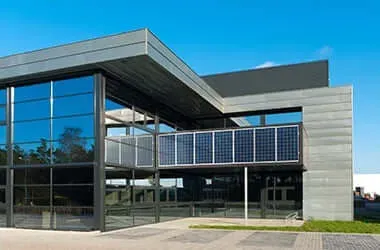Benefits and Innovations of Dual-Faced Solar Panels for Enhanced Energy Efficiency
The Advantages of Dual-Sided Solar Panels
In recent years, the quest for renewable energy solutions has prompted the development of various innovative technologies, among which dual-sided solar panels have emerged as a promising option. Unlike conventional solar panels that only capture sunlight from one side, dual-sided or bifacial solar panels are designed to absorb solar energy from both the front and rear surfaces. This unique capability offers several significant advantages, making them a valuable asset in the transition towards sustainable energy.
Increased Efficiency
One of the most compelling benefits of dual-sided solar panels is their increased energy efficiency. By harnessing sunlight from both sides, these panels can generate more electricity, especially in locations where there are reflective surfaces, such as snow, sand, or even white rooftops. Research indicates that bifacial solar panels can produce 10% to 30% more energy than their traditional counterparts, depending on the surrounding environment. This enhanced performance translates into better returns on investment for both residential and commercial installations.
Flexible Installation Options
Dual-sided solar panels offer greater flexibility in installation. They can be utilized in various settings, including rooftops, ground-mounted systems, and solar farms. In ground-mounted systems, for instance, installing these panels on raised structures allows for light to reflect off the ground and onto the rear side of the panels, maximizing energy capture. This adaptability ensures that dual-sided panels can be effectively integrated into diverse landscapes and urban environments, optimizing solar energy generation regardless of site specifics.
Longevity and Durability
Investing in dual-sided solar panels often means investing in longevity and durability. These panels are typically constructed with robust materials designed to withstand harsh weather conditions, such as high winds and heavy snowfall. Furthermore, since they can absorb light from the rear side, they can continue generating energy even when the front side is partially shaded, reducing efficiency losses and extending their useful life. This resilience contributes to lower maintenance costs and a more reliable energy source over time.
dual sided solar panels

Environmental Impact
A shift towards dual-sided solar panels also supports broader environmental goals. By increasing energy output without necessitating more land or resources, bifacial panels can help reduce the carbon footprint associated with energy production. Their efficiency can lead to lesser reliance on fossil fuels, thus accelerating the transition to cleaner energy alternatives. Moreover, the installation of solar panels—especially on commercial radiative surfaces—contributes to energy independence and sustainability efforts, fostering a cleaner, healthier planet.
Aesthetic Appeal
Modern bifacial solar panels also come with aesthetic benefits. Their sleek design and versatility make them suitable for various architectural styles. Homeowners and businesses alike can enjoy the dual advantages of energy savings and aesthetic enhancement. As community awareness and demand for renewable energy sources grow, the aesthetic appeal of these panels is an essential factor in promoting solar adoption.
Economic Benefits
The economic implications of investing in dual-sided solar panels are significant. With higher energy generation capabilities, property owners can benefit from reduced electricity bills and quicker payback periods on their investments. Additionally, many regions offer incentives and rebates for renewable energy systems, which can further alleviate installation costs. Over time, the cumulative savings from enhanced efficiency will contribute to economic resilience for homeowners and businesses alike.
Conclusion
In summary, dual-sided solar panels represent a significant advancement in solar technology. Their ability to enhance energy efficiency, provide installation flexibility, ensure durability, and contribute positively to the environment positions them as a pivotal element in the ongoing transition to renewable energy. As awareness and technology continue to evolve, bifacial solar panels are likely to play an essential role in shaping our energy future, offering not only ecological benefits but also economic advantages for individuals and communities committed to sustainable living. The time is ripe to consider dual-sided solar panels as a viable alternative for harnessing the sun's power more effectively and sustainably.
-
Unlocking Energy Freedom with the Off Grid Solar InverterNewsJun.06,2025
-
Unlock More Solar Power with a High-Efficiency Bifacial Solar PanelNewsJun.06,2025
-
Power Your Future with High-Efficiency Monocrystalline Solar PanelsNewsJun.06,2025
-
Next-Gen Solar Power Starts with Micro Solar InvertersNewsJun.06,2025
-
Harnessing Peak Efficiency with the On Grid Solar InverterNewsJun.06,2025
-
Discover Unmatched Efficiency with the Latest String Solar InverterNewsJun.06,2025







